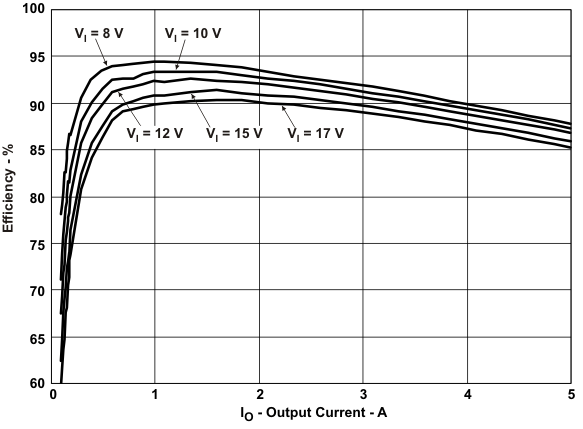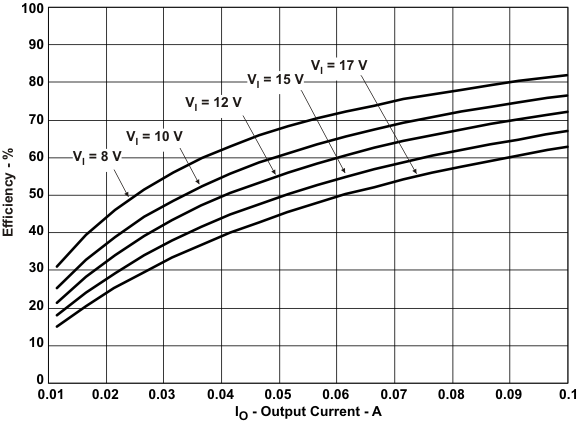SLVU379A August 2010 – August 2021 TPS54521
2.2 Efficiency
The efficiency of this EVM peaks at a load current of about 1.1 A and then decreases as the load current increases towards full load. Figure 2-1 shows the efficiency for the TPS54521EVM-607 at an ambient temperature of 25°C.
 Figure 2-1 TPS54521EVM-607 Efficiency
Figure 2-1 TPS54521EVM-607 EfficiencyFigure 2-2 shows the efficiency for the TPS54521EVM-607 at lower output currents below 0.10 A at an ambient temperature of 25°C.
 Figure 2-2 TPS54521EVM-607 Low Current Efficiency
Figure 2-2 TPS54521EVM-607 Low Current EfficiencyThe efficiency may be lower at higher ambient temperatures, due to temperature variation in the drain-to-source resistance of the internal MOSFETs.